Disaggregated Data Centers (DDC)
- Control and Management Architecture
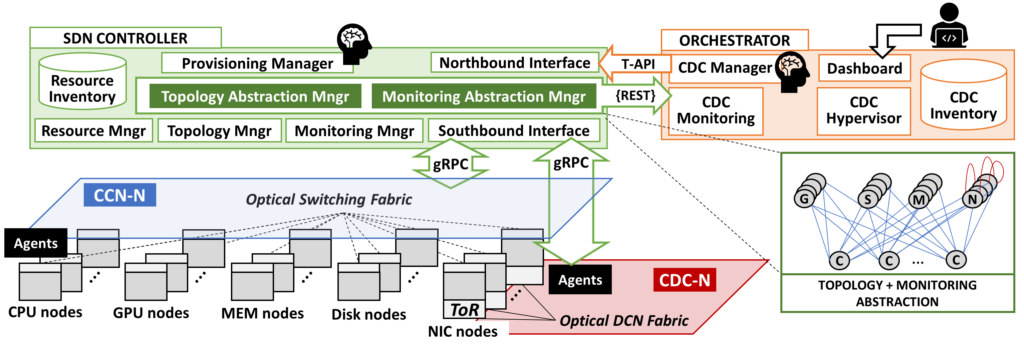
Slicing in Multi-domain B5G Networks
- To support multi-tenancy, the physical infrastructure is partitioned in multiple independent network slices supporting end services
- Service functions are deployed as Virtual Network Functions hosted at distributed computing premises
- Service connectivity is materialized through multiple datapaths across the several network segments
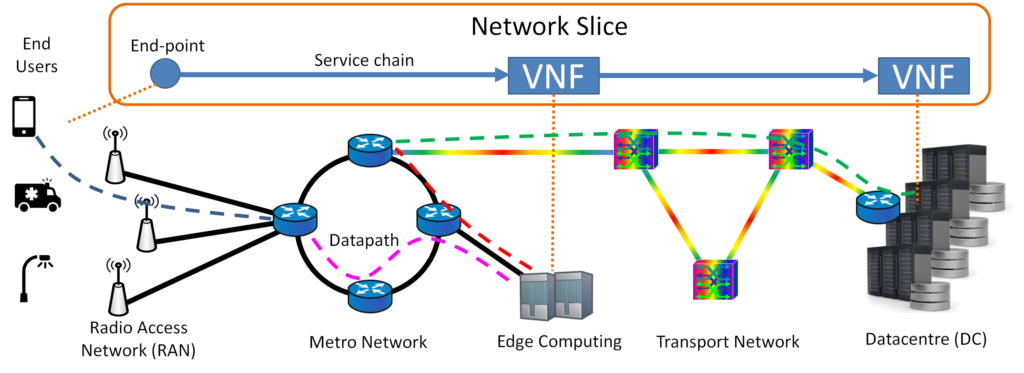
Slice Quality Assurance
- Independent quality assurance must be performed per slice
- Monitoring at all levels is required
- Given monitored data, an actuation plan is executed to keep optimal slice/service quality levels
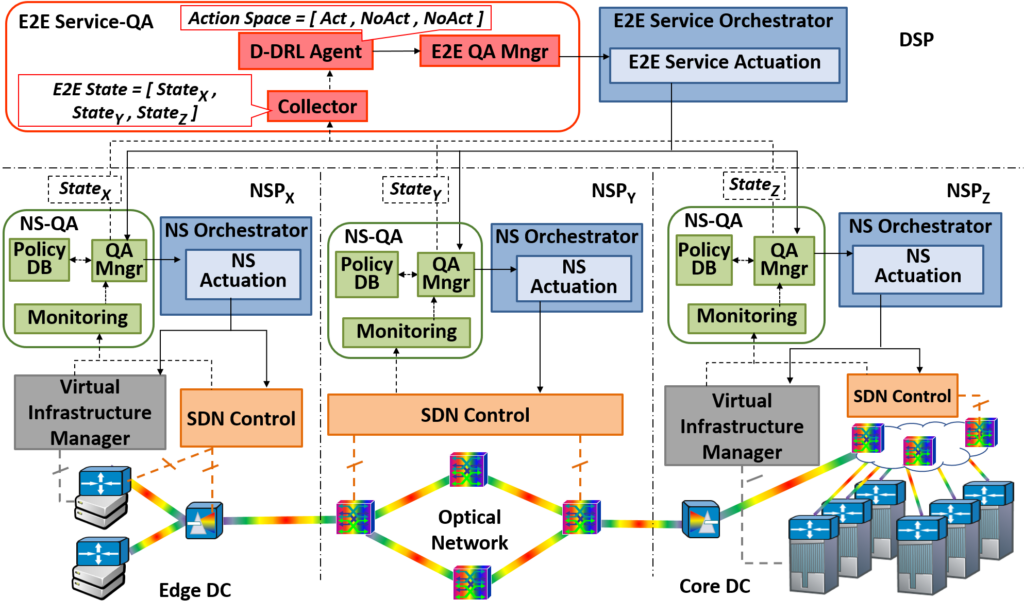
Towards Autonomous QA
- B5G network and slicing introduce complexity to QA due to the increased number of elements, states and actions
- An autonomous operation of QA functions is required for efficient operation
- Machine Learning-based governance systems enable the autonomous re-configuration of the infrastructure to meet quality goals
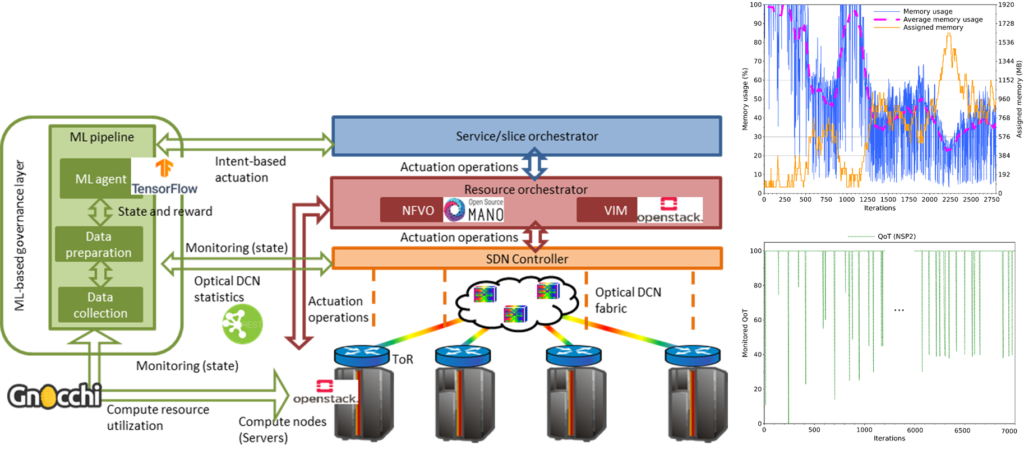
Overall Testbed
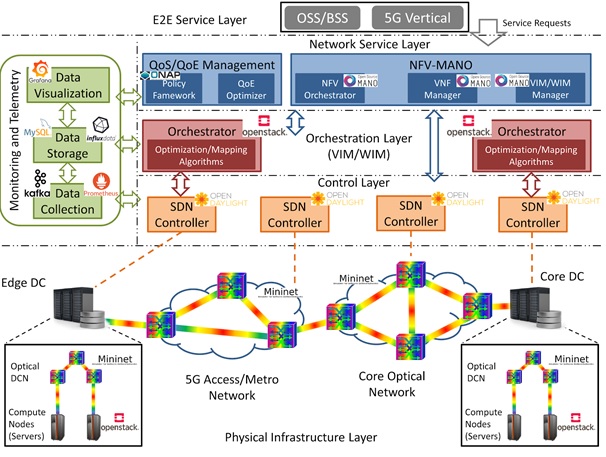
The control and orchestration layers offer their capabilities to an upper Network Service Layer, composed by an NFV-MANO entity, which allows for the creation of network services, leveraging on the operations exposed by both OpenStack orchestrators and ODL controllers. The NFV-MANO entity is based on the OpenSource MAN (OSM) platform enabling our testbed with the capacity to deploy network services consisting of several Virtual Network Functions (VNFs) instances interconnected by virtual links stating the desired network capacities between functions. These network services satisfy the requirements posed by upper layer end-to-end service requests. Said requests can be generated thanks to external demand generators by calls to the several exposed APIs or by engaging directly with the dashboards of the several platforms present in the testbed.
In complement to the several platforms that allow for the deployment of network services and virtual infrastructures, our testbed also includes an actuation framework dedicated to the quality maintenance of the deployed services. A cross-layer monitoring and telemetry plane is present, which allows for the collection of metrics and data from the statistics collected from the physical infrastructure by the several SDN controllers and orchestration entities. In essence, a data collection phase based on Prometheus and Kafka enables the collection and streaming of particular metrics related to the underlying infrastructure and deployed services. The specific metrics that are collected can then be stored at dedicated datastores/databases for the consumption of external entities. Our testbed has both the capacity to store data in standard relational databases based on MySQL or in time series-based databases (InfluxDB) for cases in which the time dimension of the collected metrics is of relevant importance. Said metrics can be displayed in a Grafana data visualization tool, that allows for a visual inspection of the metrics and their trends. Aside from the visualization of the metrics, the several samples can be injected onto the orchestration instances in order to feed the optimization/mapping algorithms or onto a Qos/QoE Management block present at the Network Service layer. The purpose of this block is to enable the quality maintenance of the deployed services over the time. In this regard, our testbed employs a policy-based approach, in which a Policy Framework (based on the ONAP platform) defines specific policies for specific Events happening on the supervised infrastructure/services. Given the events, the policies state under what conditions a specific action should be materialized to keep quality levels at their desired values. The supervision of the metrics associated to the events and checking if the defined conditions are met is done by a in-house developed QoE Optimizer module which, given the defined policies by the policy framework, executes the defined actions when the conditions for events are met (e.g. the packet loss ratio goes above certain threshold). Under such conditions, the QoE optimizer engages with the MANO and Orchestration entities to enforce the actions, which ultimately result in the maintenance of quality levels over the time.